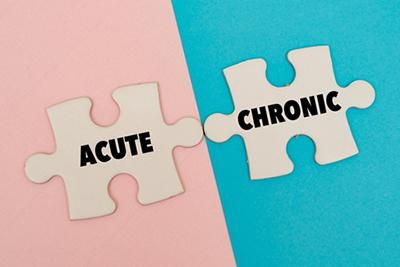
Injuries are categorized as acute or chronic for several important reasons. According to Dr. Antoine Geffrard of RMS Consultations in Southfield, MI, these classifications help healthcare professionals better understand the cause and nature of each type of injury, allowing them to plan the most appropriate treatments.
How to Differentiate Between Acute and Chronic Injuries
An acute injury results from a specific event that is typically considered traumatic, such as a fall or accidental impact. These injuries usually happen suddenly and are characterized by sharp, severe pain. Acute injuries often require immediate care, as symptoms typically appear right after the event. With proper medical treatment, acute injuries can heal within days or weeks.
On the other hand, chronic injuries are the result of extended periods of repetitive stress or overuse. Chronic injuries stem from long-term activities, habits, or ergonomic conditions that contribute to the problem over time. They cause persistent, dull, aching pain and stiffness, which may become aggravated by extended periods of inactivity. Chronic injuries can persist for months or even years, especially if not properly addressed or treated.
Treating Acute Injuries
Acute injuries generally require immediate care. The most common treatment approach follows the R.I.C.E. method, which stands for rest, ice, compression, and elevation. In severe cases, emergency intervention may be necessary, such as surgery or immobilization. The goal of treatment is to restore function and promote healing.
Examples of acute injuries include:
- Sprains
- Strains
- Fractures
- Dislocations
Treating Chronic Injuries
Chronic injuries develop gradually over time as a result of repetitive stress or overuse. Symptoms tend to emerge slowly over weeks or months. Treatment for chronic injuries often requires long-term intervention and lifestyle changes to prevent further development or recurrence. Gradual medical intervention, sometimes accompanied by physical therapy, may be necessary to manage the injury effectively.
Examples of chronic injuries include:
- Tendinitis
- Stress fractures
- Shin splints
Prevention Strategies for Acute and Chronic Injuries
Acute injuries are difficult to predict, but they can be prevented by focusing on safety measures such as wearing protective gear and avoiding risky behavior. Chronic injuries, on the other hand, can be prevented with proper education, ergonomic adjustments, and modifying repetitive activities.
It's important to note that proper diagnosis is crucial, as treatment approaches differ for acute and chronic injuries. For more information or if you have questions, contact Dr. Geffrard of RMS Consultations, a service of Rehabilitation Medical Specialists in Southfield, MI, at 248-663-5353 or visit us online.
